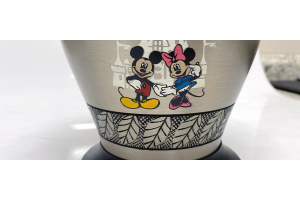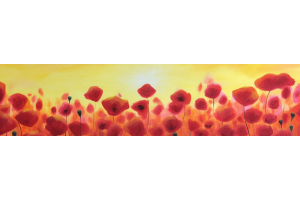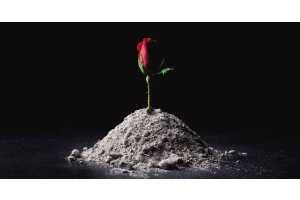
When someone we love is dying, there are many tasks involved. The day –to- day details of caregiving, food preparation, and daily chores take up most of the day. It can be overwhelming. The most important of all activities is, of course, spending precious time with our loved one. Even when we carve out that quality time to sit at the bedside, hold a hand or do a simple activity, we can often feel at a loss for meaningful conversation.
It can be scary to talk about things of ordinary living when you know the person dying won’t experience them again. It is nice to think that we could revisit the joys and pleasures of our shared life together, but that is easier said than done. Such simple talk can bring up the deep emotion of grief, and the grief of losses that we have experienced over a lifetime. Every person has their own way of dealing with things in life. That doesn't change when someone is dying.
It isn't always possible to talk about the past, and the future may be too awkward with the death around the corner. Perhaps this relationship is even one where sharing deep feeling never came easy. When we realize that today, this day, this hour and this moment is the most important, it can provide the gentle space necessary to recognize what is next to do and what is next to say – or not.
Respect provides a firm foundation on how to proceed. Recognizing and honoring a person’s wishes regarding their death, according to their spiritual beliefs and life preferences, is of first-most importance. This can provide an opportunity to explore how, or if, your loved one wants to participate in conversations about after death preparations, burial or cremation, funerals, memorials or celebrations of life. In some circumstances, there may be a spiritual or religious structure or ritual that can help guide a family. It may be in the form of a person who is a minister, priest, social worker, or even the doctor who can give pertinent information on the needs a person has at time of and after death. But, because this is of a very personal nature and each dying person unique, it can vary greatly.
Sometimes people find themselves on their own in this area. If you find yourself in this position, rest assured that you are not alone and there is a way through. Pre-planning, to the extent that we are able, can provide a degree of security and calm in the midst of the unknown. Whether someone chooses burial or cremation, pre-planning with the funeral home has been a longstanding tradition. As cost is always a factor, understanding those costs can help determine choices.
When someone you love is dying, it is acceptable to choose and purchase either a casket or a cremation urn before your loved one has passed. Like with buying a casket, when someone has chosen cremation after death, the dying person may have a meaningful preference that can help guide your choice. Tending to matters at hand, if your loved one is open, can provide a window of opportunity to begin to share about sensitive topics. If your loved one does not want to share in this end-of-life detail, do not worry.
It is not uncommon for someone who may not feel good, has lived a full life or whose life has been cut short to not want to involve themselves. Laying down the burdens of the living – including the details of dying - is a respectable option. If this is so, it is also acceptable, even though it may feel awkward for you, to educate yourself on the details of caskets and urns, burials and end-of-life rituals. When cremation has been chosen as an option, there are a variety of cremation urns available.
A cremation urn is a container for the ashes, or cremains, of a loved one. A cremation urn can be used to bury the ashes in a traditional burial plot, a storage place before scattering or a permanent container that you may like to keep in your home. Choosing an urn before your loved one has passed can help bring a sense of order to this end of life time.
Because of the wide diversity of people in life, there are just as wide a diversity of cremation urns from which to choose. Cremation urns can be made of stone, wood, resin, ceramic and biodegradable materials. Cost for urns vary according to material and design. After cremation, for an average adult, there are four to six pounds of cremains (for a nice visual, imagine the size of a five pound bag of sugar.) The interior of cremation urns will all be sized in that way.
For children and infants, they are accordingly smaller. The exterior of an urn can be in many shapes, designs or themes. In exploring urns for our loved ones, images, sensations and memories of their life may guide you. If we are doing this on our own, or with a loved one, it can be a special time to let the images and memories flow. When we do this, it does not mean that grief will not surface. It does mean the we receive the opportunity to let grief and joy mingle, which can ease an aching heart. When buying a cremation urn while your loved one is still alive, reach out to someone in your time of need, even as you tend the needs of your loved one.
Friends, family, or a caring professional can help guide you and provide comfort as you make difficult and necessary decisions. When the living take care of the details of death, this gives the dying – our loved ones – unparalleled peace of mind.





